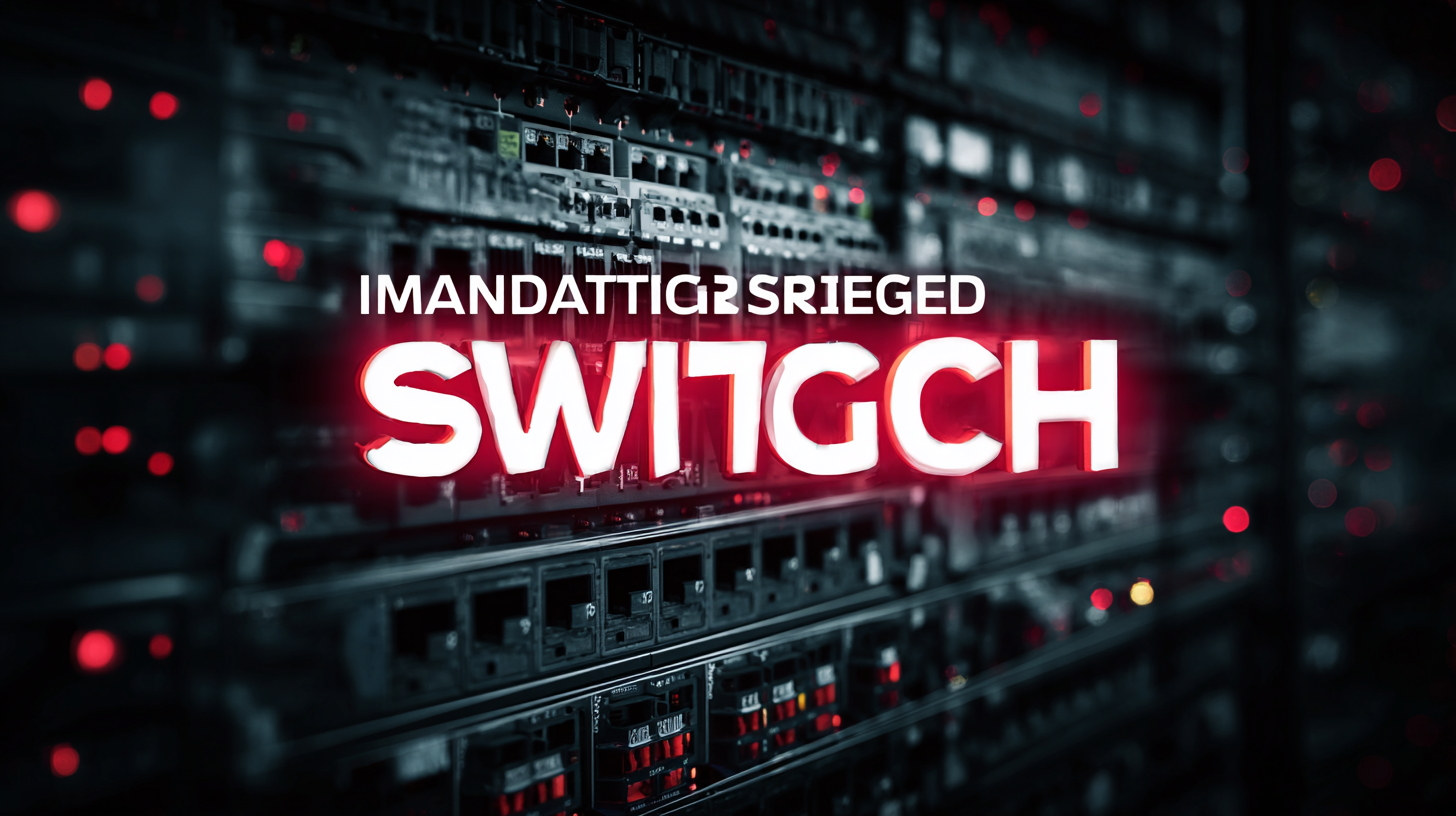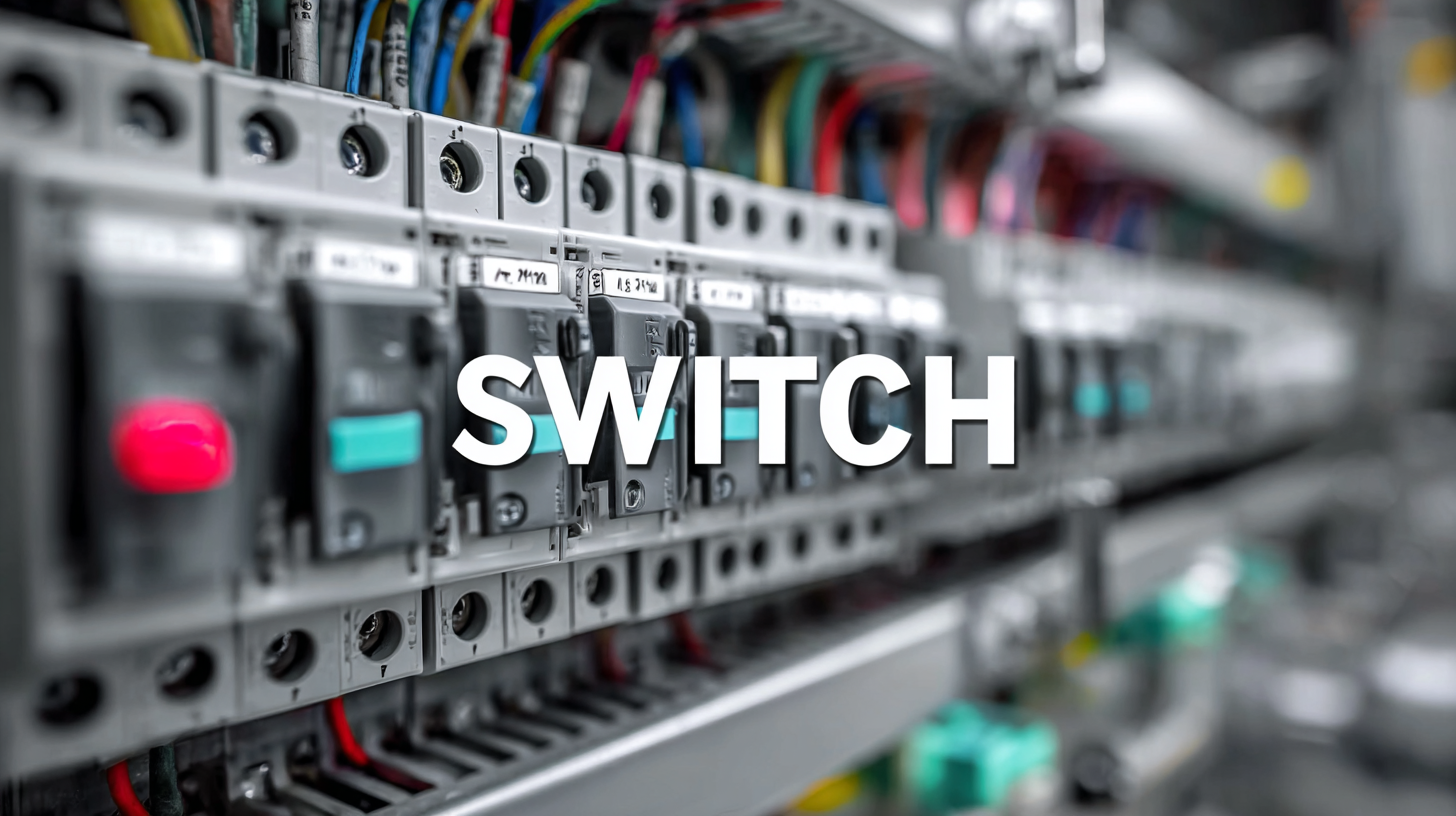
- hasivo@hasivo.com
- Mon - Sat at 7:00AM to 9:00PM
Leave Your Message

In today’s rapidly evolving industrial landscape, the role of an Industrial Managed Switch has become increasingly vital for optimizing global supply chains. According to a recent report by MarketsandMarkets, the industrial Ethernet switch market is projected to grow from $1.8 billion in 2020 to $3.3 billion by 2025, driven by the need for reliable communication and enhanced data management in manufacturing and logistics. As businesses seek to streamline operations, improve connectivity, and ensure the security of their data, choosing the right Industrial Managed Switch can significantly impact their overall efficiency. This decision is crucial not only for seamless information transmission but also for maintaining the integrity of supply chain processes in a highly competitive market. Therefore, understanding the key features and benefits of Industrial Managed Switches is essential for organizations aiming to sustain and advance their supply chain performance.

Industrial managed switches play a crucial role in enhancing supply chain efficiency by enabling seamless communication between various networked devices across diverse facilities. These switches facilitate the integration of automation systems, ensuring that data flows smoothly between production lines, warehouses, and distribution centers. Furthermore, they provide advanced features such as VLAN support, QoS, and redundancy protocols that help in minimizing downtime and optimizing network performance, which is essential for maintaining continuity in global supply chain operations.
In addition to improving communication, industrial managed switches offer enhanced security features that are vital for protecting sensitive supply chain data. With the increasing prevalence of cyber threats, robust security measures, including network segmentation and access control, help safeguard against potential breaches. This ensures that critical supply chain operations are not only efficient but also secure, allowing stakeholders to focus on strategic initiatives rather than worrying about data vulnerabilities. By investing in the right industrial managed switch, businesses can boost overall supply chain effectiveness and respond more agilely to market demands.

When selecting an industrial managed switch for your global supply chain needs, there are several key features to consider that can enhance your operations.
First and foremost, resilience and redundancy are crucial. It's essential to choose a switch that supports Ring and Mesh topologies, enabling seamless network recovery and minimizing downtime. According to a recent report, over 60% of industrial network failures can be attributed to single point failures, making redundancy a critical aspect for maintaining uninterrupted operations.
Another significant feature is security. As industrial environments become increasingly connected, the risk of cyber threats rises. Select a managed switch with advanced security protocols, such as VLAN support and MAC address filtering, to protect sensitive data. Tips for enhancing security include regularly updating firmware and implementing comprehensive network monitoring tools.
Lastly, consider the switch's scalability and management capabilities. A switch that can easily adapt to growing demands helps maintain efficiency throughout your supply chain. Look for features like SNMP support to facilitate easier network management and monitoring. Utilizing scalable solutions can reduce future costs and ensure that your infrastructure can evolve alongside your business needs.
When evaluating performance and reliability in global supply chains, it is crucial for manufacturers to prioritize supply chain optimization. Enhanced operational efficiency can drastically lower costs and improve responsiveness to market demands. Recent literature highlights the importance of a resilient supply chain framework that addresses disruptions, enabling organizations to recover swiftly from unforeseen events. This resilience is especially vital in today's landscape, where supply chains are increasingly vulnerable to global uncertainties.

Technological advancements, such as AI and deep learning, are reshaping supply chain management by allowing businesses to implement predictive maintenance and optimize inventory control. These innovations not only bolster uptime but also provide a competitive edge. By leveraging smart technologies, manufacturers can assess supply chain performance against key indicators such as Environmental, Social, and Governance (ESG) criteria, promoting sustainable practices alongside operational excellence. This multifaceted approach ensures that supply chains are not only robust and efficient but also aligned with global sustainability goals.
When evaluating industrial managed switches for your global supply chain needs, it's crucial to compare different brands to identify which ones stand out in both performance and reliability. Leading brands like Cisco, Delta Networks, and Moxa have established a strong presence in the market, each offering unique features tailored for industrial applications. Cisco, for instance, provides robust security features and a comprehensive management interface, making it an ideal choice for large-scale operations. In contrast, Moxa is known for its rugged design and high tolerance to environmental factors, perfect for extreme industrial settings.
Tips: When selecting an industrial managed switch, consider the specific environment in which it will be deployed. For harsh conditions, look for switches with IP-rated enclosures that protect against dust and moisture. Furthermore, peer into the brand’s customer support and warranty options. This can significantly impact your operations in the long run, allowing for peace of mind when issues arise.
Additionally, evaluate the scalability of the switches you’re considering. Brands that offer modular designs or advanced features such as Power over Ethernet (PoE) capabilities could provide greater flexibility for future expansions in your supply chain. Always test integration capabilities with existing systems to ensure seamless compatibility.
Integrating managed switches into your global supply chain infrastructure is essential for optimizing performance and enhancing security. According to a recent report by MarketsandMarkets, the global managed switch market is expected to grow from $3.29 billion in 2020 to $6.51 billion by 2025, reflecting the increasing reliance on efficient network management. A critical strategy for successful integration involves selecting managed switches that offer robust features such as VLAN support, Quality of Service (QoS) settings, and easy scalability, which are crucial for adapting to the evolving demands of supply chains.
Another key consideration is the compatibility of managed switches with existing IT systems. Research shows that over 70% of organizations report integration challenges when upgrading technology within their supply chain networks. To mitigate this, businesses should consider managed switches that support open standards and interoperability with various network protocols. Additionally, leveraging analytics capabilities found in advanced managed switches can provide real-time insights into network performance, allowing for proactive maintenance and reduced downtime—a vital factor in maintaining efficiency across global operations.
This chart illustrates the performance metrics of various industrial managed switches in terms of bandwidth, latency, and number of ports. The data represents an analysis of switches used in global supply chains to optimize network efficiency.